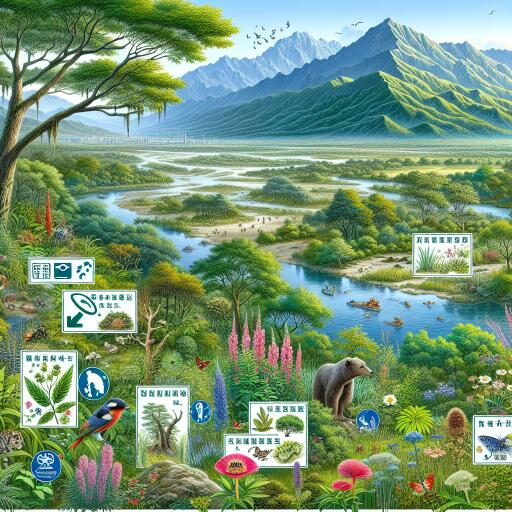
At Qianjiangyuan National Park, a technician meticulously collects fallen seeds using a magnifying glass and tweezers. By studying the contents of withered leaves, small tree branches, flowers, and fruits, researchers can generate crucial data that supports the scientific protection of the forest.
This technician is part of the Zhejiang Qianjiangyuan Forest Biodiversity National Observation and Research Station team. The station employs four technicians who are tasked with collecting wild samples, recording data, and monitoring changes in vegetation throughout the life cycle.
Qianjiangyuan National Park, located in Kaihua county, Quzhou city, Zhejiang Province, spans an area of approximately 252 square kilometers. The park comprises three protected areas and the ecological zones that interconnect them.
Set within a mountainous region, the park’s lush forests and diverse wildlife have earned it the moniker “natural water tower” of the Yangtze River Delta. Its ecological importance is underscored by its pristine ecosystem, preserving an expansive range of untouched subtropical low-altitude evergreen broad-leaved forest vegetation.
Recent research data highlights that Qianjiangyuan is home to 2,234 species of higher plants, 449 species of large fungi, and 2,427 species of animals. Noteworthy is its global significance as a concentrated distribution area for the black muntjac and Elliot’s pheasant, two endangered species native to China and under first-class state protection.
A comprehensive biodiversity monitoring system has been established in the park, incorporating unmanned drone inspection and infrared cameras. Qianjiangyuan is divided into 267 grids, each measuring 1 km². Each grid contains two to three infrared cameras to aid in wildlife monitoring.
Significant steps to protect biodiversity have been taken in Kaihua county, including establishing an environment and resources mobile court, an ecology and environment case center, an ecological police center, and a joint operations workstation.
With a holistic approach that includes integrated restoration of mountains, waters, forests, fields, lakes, and grasslands, in addition to the rescue and protection of rare and endangered species, Kaihua county is persistently restoring its ecological resources and preserving wildlife habitats.
In 2022, the park introduced an ecological smart governance system leveraged by digital technology to advance ecological protection. This system includes eight perception systems for drone-based disaster prevention inspections and wildlife identification, as well as 25 sub-scenes.
These components craft a comprehensive monitoring and early warning system covering the sky, space, land, and human activities. This system ensures continuous oversight of the entire park, key ecological systems, and critical species, providing solid support for scientific research.





Leave a Reply